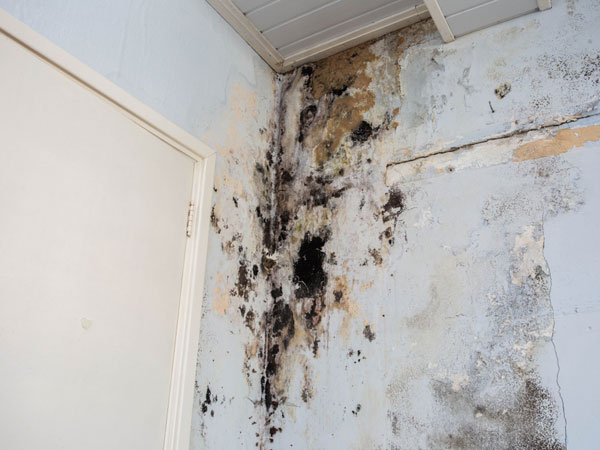The writer is making several great pointers relating to How can you handle tenant plumbing issues effectively overall in this post directly below.

Handling plumbing issues in rental residential or commercial properties successfully is critical for keeping occupant satisfaction and protecting the home's value. Whether you're a property owner or a residential or commercial property manager, recognizing exactly how to attend to these usual troubles can conserve you money and time while ensuring conformity with lawful responsibilities. Below's a step-by-step overview on just how to take care of pipes issues in rental residential or commercial properties.
Establish Clear Communication
Encourage tenants to report any plumbing issues as soon as they take place. Supply multiple communication channels such as phone, e-mail, or an occupant portal to make it very easy for them to reach out. Prompt feedbacks to these reports can avoid small issues from escalating into significant problems.
Educate Occupants
Enlighten your tenants concerning what comprises a pipes emergency situation and what does not. Offer guidelines on exactly how to handle small problems themselves, such as using a bettor to unblock a bathroom. Also, educate them concerning what they need to prevent putting down drains to stop obstructions, such as grease, coffee grounds, and non-biodegradable products.
Routine Maintenance
Apply a routine upkeep timetable for all plumbing systems in your leasing properties. Routine checks can aid identify and deal with problems like leaks, slow-moving drains pipes, or corroded pipelines before they end up being major. Think about hiring an expert plumbing technician to examine the homes each year or semi-annually.
Quick Action to Emergency Situations
Have a strategy in place for replying to plumbing emergencies. This should include having the contact details of dependable plumbing services that supply 24/7 emergency repair work. Quick activity is vital to lessen damage in situations like ruptured pipelines or extreme leaks.
Record Everything
Keep detailed documents of all reported plumbing problems and the actions required to fix them. Paperwork needs to include days, summaries of the trouble, communication with occupants, and invoices from specialists or plumbers. This info can be crucial for insurance coverage cases, tax reductions, and lawful protection.
Usage Qualified Professionals
Constantly use accredited and insured specialists for significant pipes repairs and installations. This makes sure that the work is up to code and can assist stay clear of liability problems in case of mishaps or more damage. It also guarantees lessees that repairs are being managed professionally.
Understand Legal Obligations
Recognize your lawful responsibilities pertaining to pipes and general home upkeep. Most jurisdictions require property managers to guarantee their residential or commercial properties are habitable and that all plumbing systems remain in good working order. Failing to address severe concerns quickly can result in legal actions from occupants.
Lessee Repayments
If a plumbing issue requires immediate attention and the renter solves the concern by themselves, have a clear plan in position for compensating prices. Make certain lessees recognize they need to obtain prior approval for higher-cost repair services unless it's an outright emergency situation.
Preventive Upgrades
Think about updating older plumbing systems and components to more modern-day, efficient models. This can minimize the frequency and severity of pipes concerns and lower lasting maintenance costs. It's also a marketing factor for prospective tenants that value upgrades and modern-day functions.
Renter Move-Out Inspections
Conduct extensive plumbing checks throughout move-out assessments to make sure that any issues are recognized and attended to before a new lessee relocate. This avoids disagreements with brand-new renters over pre-existing conditions and makes certain the building remains in top problem.
Final thought
Handling pipes problems in rental residential or commercial properties calls for a positive approach and great communication with lessees. By remaining on top of maintenance, responding quickly to emergencies, and making use of competent professionals, landlords can keep their buildings in superb problem and maintain great relationships with tenants.
How to Handle Water Damage in a Rental Property
What is Water Damage?
Water damage is harm or destruction caused by water entering areas where it is not supposed to be. It can be caused by a variety of sources and can manifest in different ways. The most common examples of water damage include:
Leaking roof Plumbing leaks Appliance malfunctions Poor drainage Flooding Sewage backup Condensation Tenant negligence HVAC system issues Frozen pipes Is water damage dangerous?
Water damage itself is not inherently dangerous, but it can lead to various hazards and health risks if not promptly and properly addressed. The severity of these risks depends on the extent of the water damage, the source of the water, and how quickly it is mitigated.
Some potential dangers associated with water damage include structural damage, mold and bacterial growth, electrical hazards, water contamination, and pest infestations. In situations where mold and mildew have gone unaddressed, mold can start to develop within 24-48 hours of water exposure, and this can impose a serious health risk to tenants. In particular, mold spores and damp conditions can lead to respiratory issues and even make existing health problems worse, such as allergies, asthma, or immune disorders.
Water Damage in an Apartment - Who is Responsible?
If the water damage is caused by the tenant’s negligence, the tenant is responsible for the cost of repairs. If the water damage is caused by a defect in the property, the landlord is responsible for the cost of repairs. If the water damage is a result of natural causes, such as excessive rain, then the landlord is responsible, since the water intrusion likely occurred due to a defect in the property. Landlord Responsibility water damage in rental property
Since maintaining habitability is the landlord’s legal responsibility, landlords are responsible for any resulting structural damage caused by water damage. These structural damages may include damage to walls, roofs, ceilings, and flooring. If water damage has affected the rental property’s original structure, the landlord is responsible for repairing or replacing those materials. Therefore, landlords should have property insurance that covers the structural components of their rental property so that they can receive help with the costs of covered events.
Preventative measures can also help landlords avoid massive renovations. Preventative maintenance may include conducting regular inspections to identify and address potential water damage before it becomes a major and urgent problem.
If a landlord fails to meet their responsibilities regarding water damage, it can lead to legal disputes and potential liability. Tenants who believe their landlord is not addressing water damage issues in accordance with California law can seek legal advice or contact local housing authorities for assistance.
https://www.goodlifemgmt.com/blog/water-damage-in-a-rental-property/

We were brought to that report about How can you handle tenant plumbing issues effectively from an associate on another website. If you enjoyed reading our post kindly do not forget to pass it around. Kudos for being here. Please come by our site back soon.